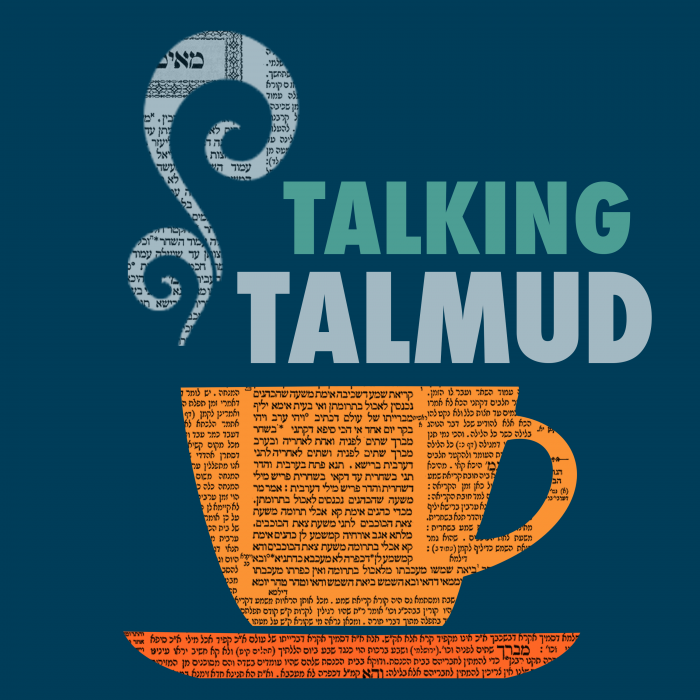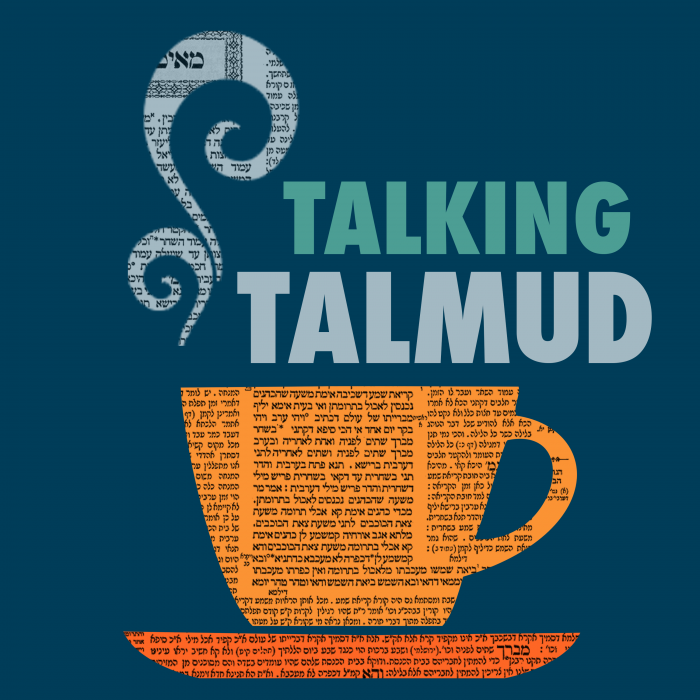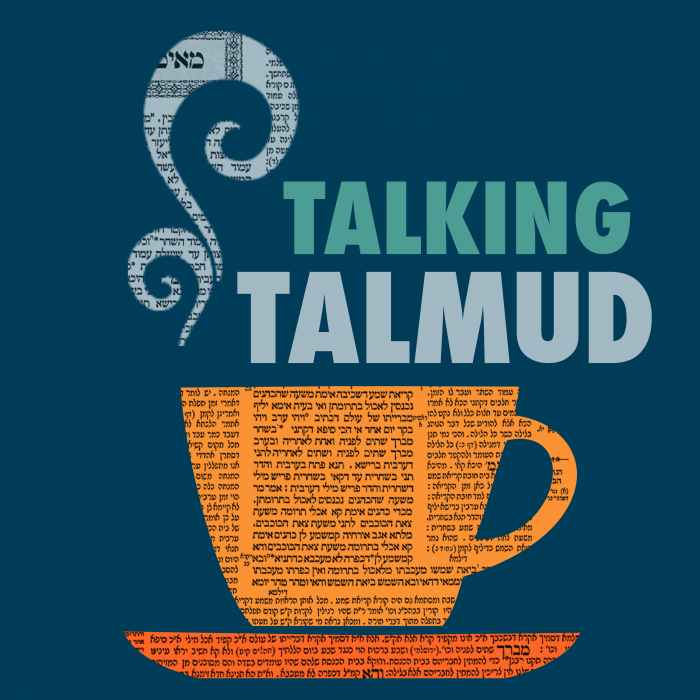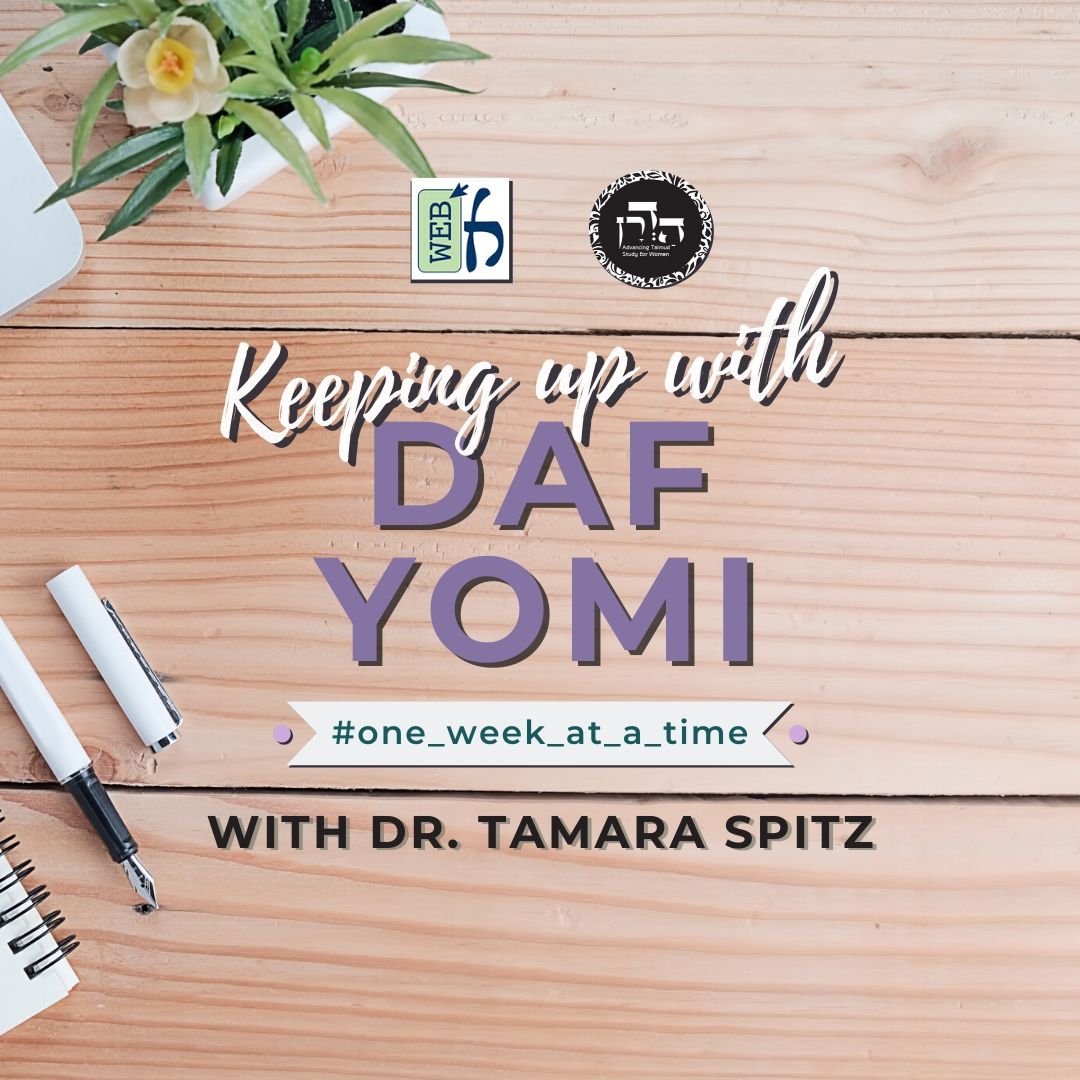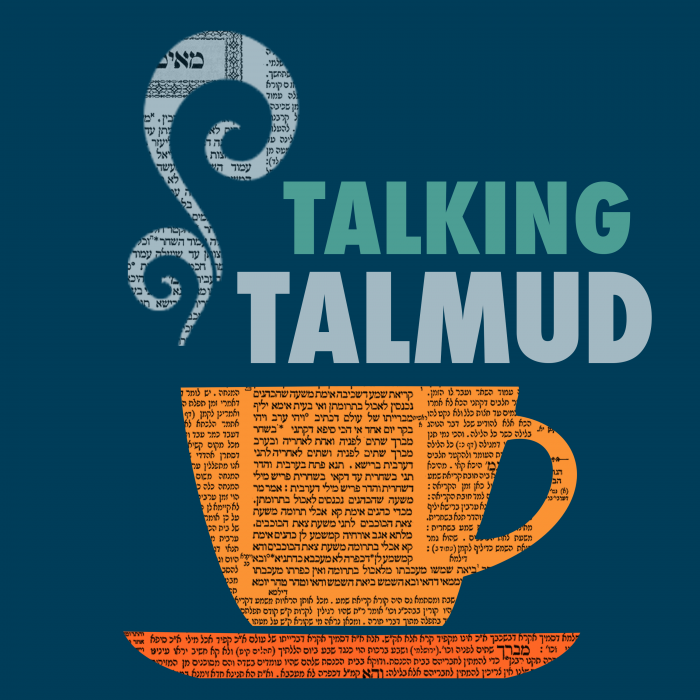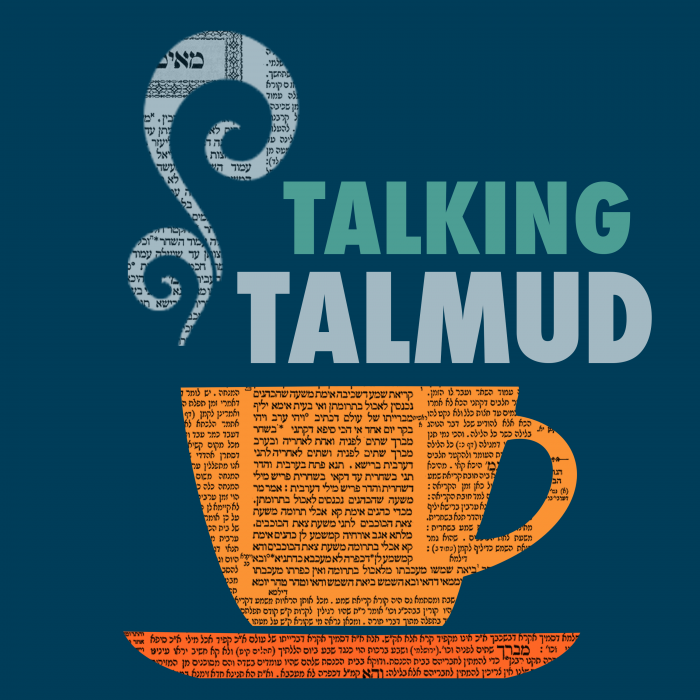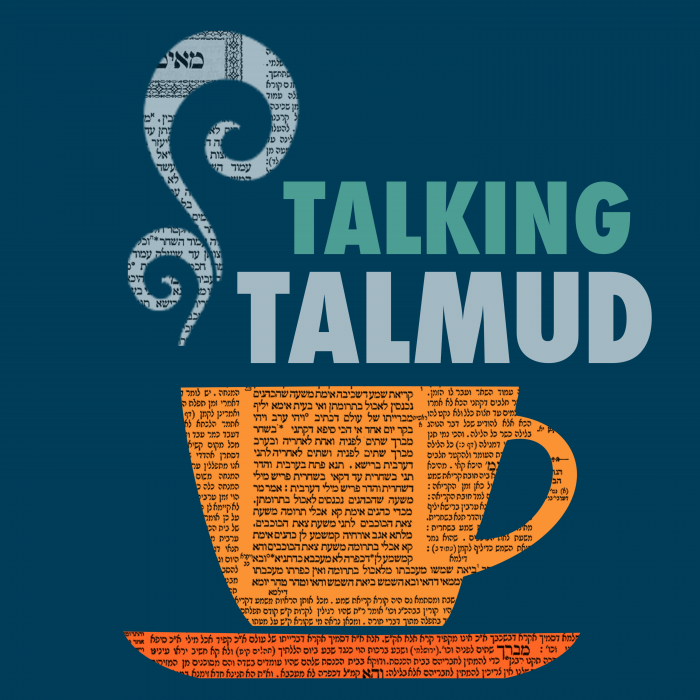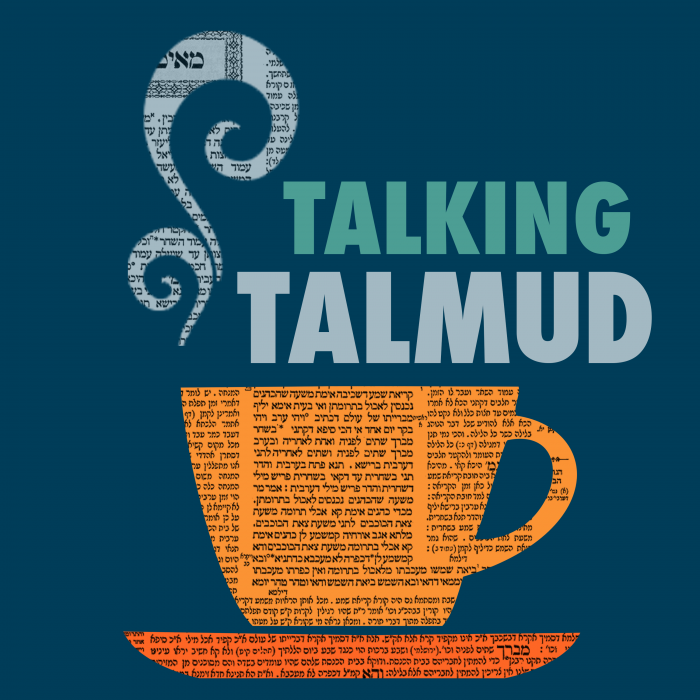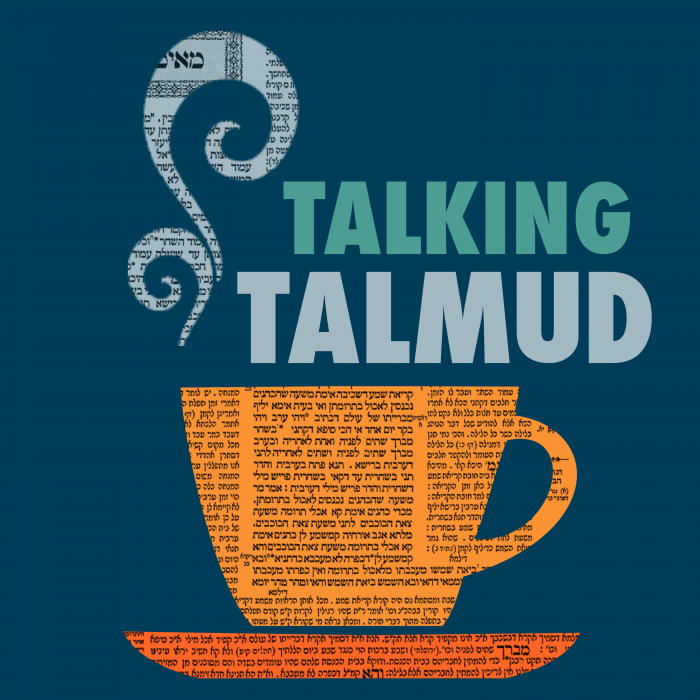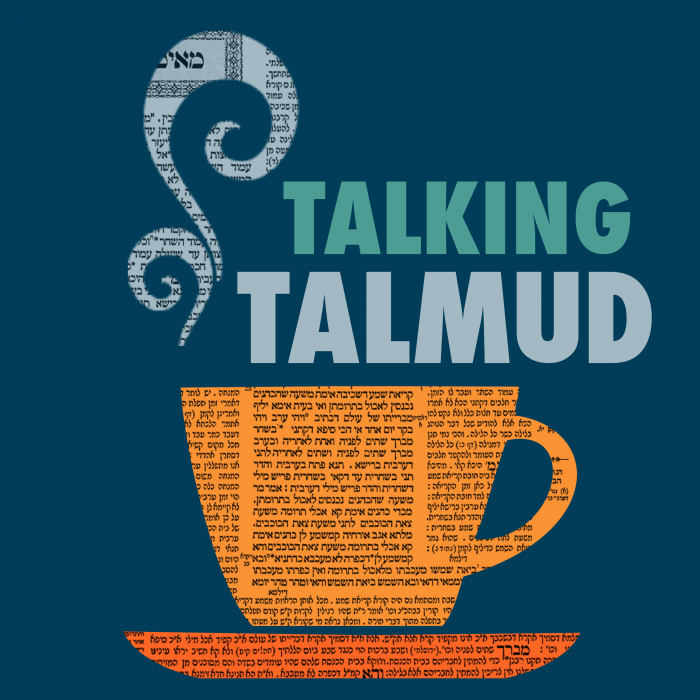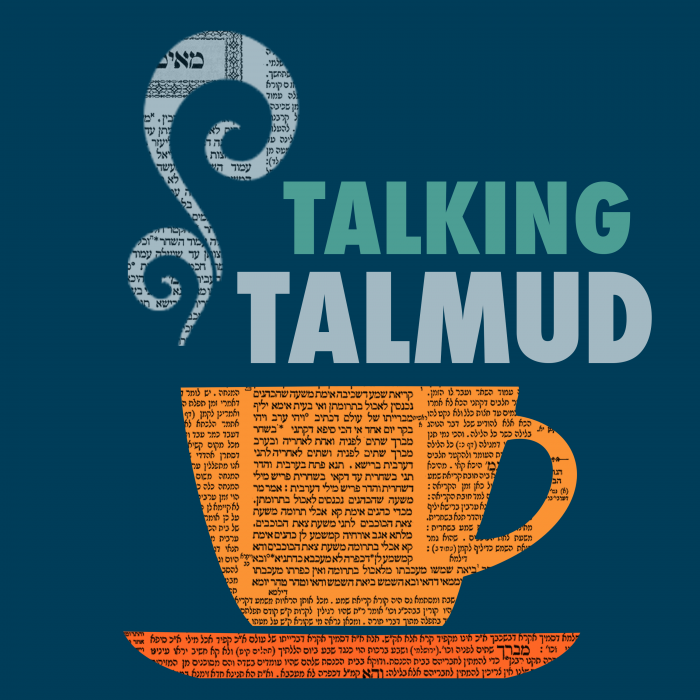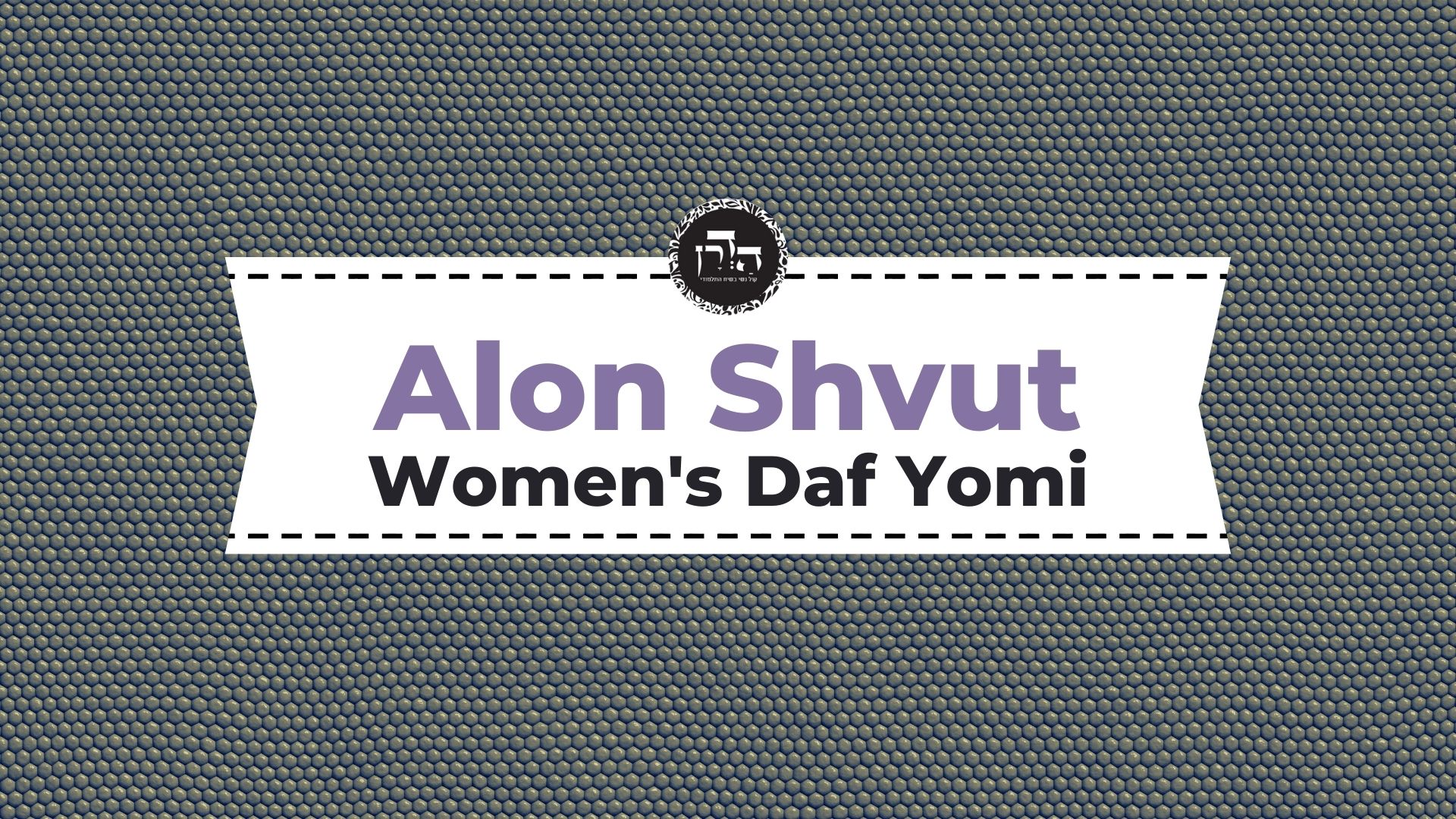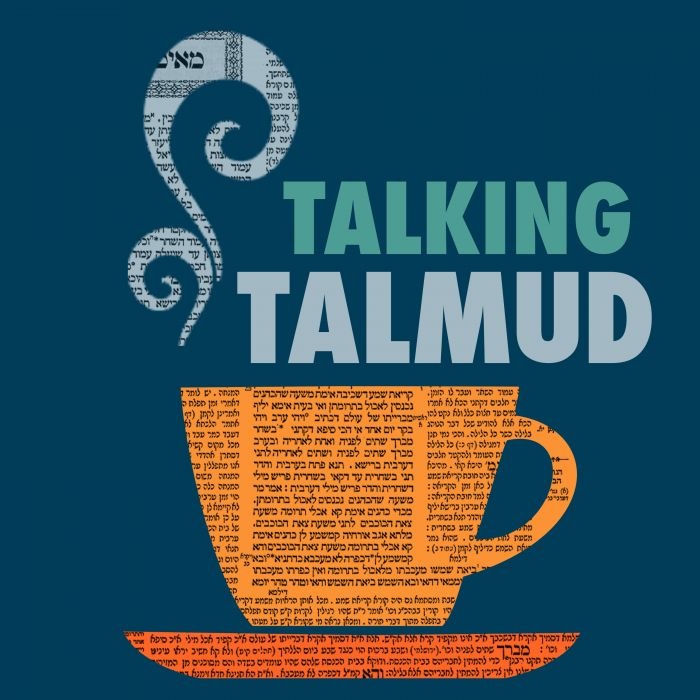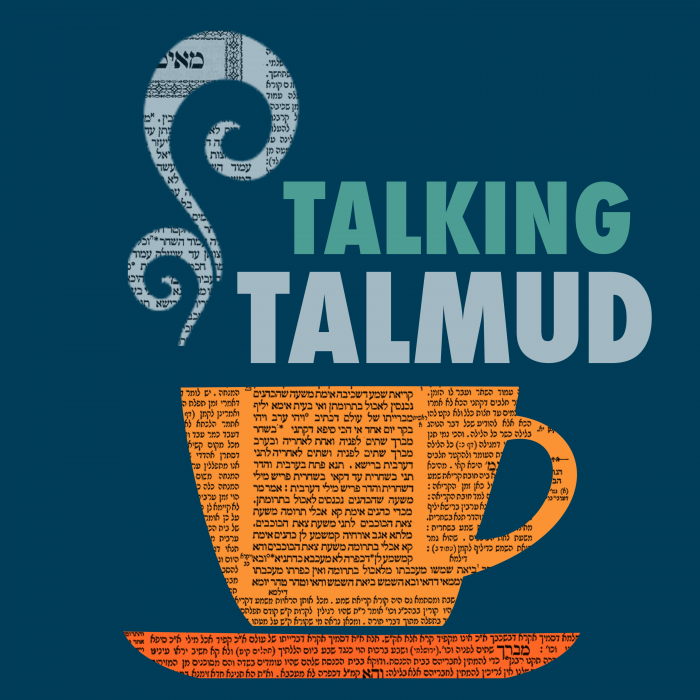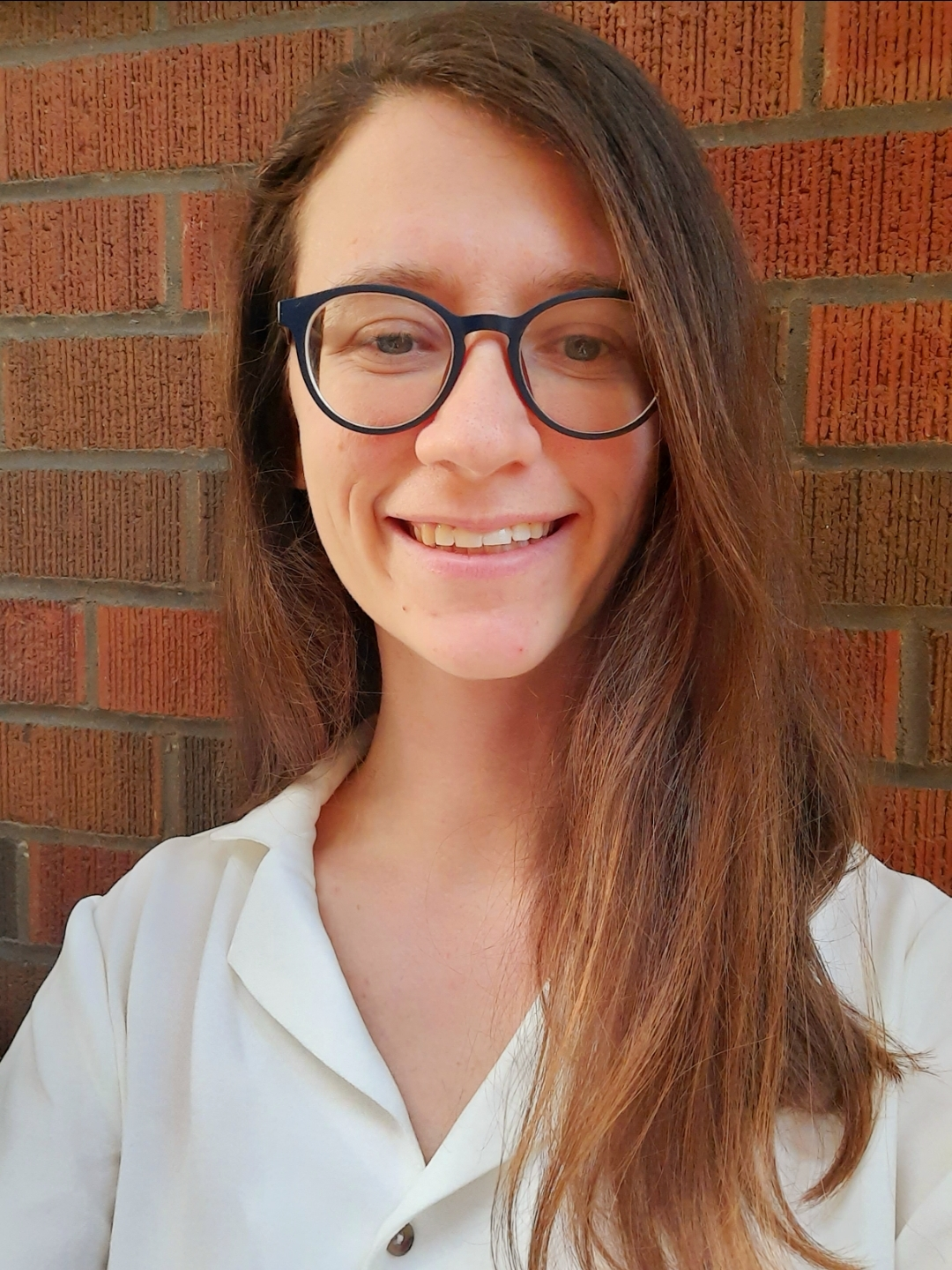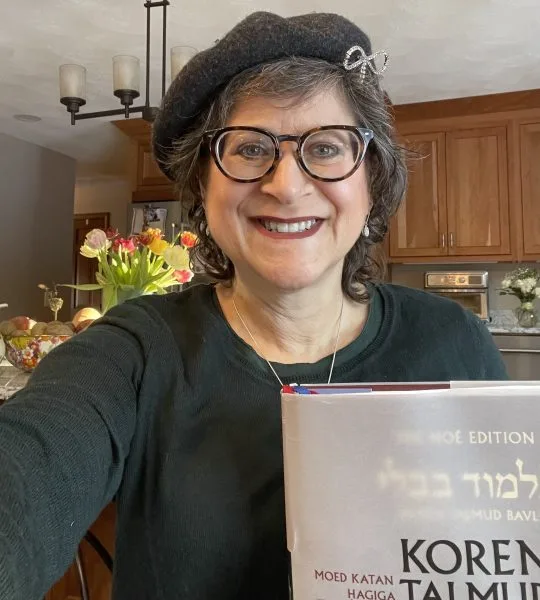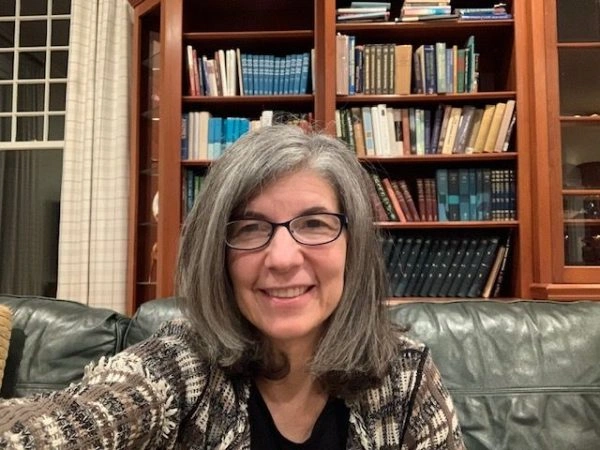From where does Rabbi Akiva derive the halacha that obligatory sacrifices can’t be brought form maaser sheni? What are the rules regarding what produce the mincha offerings (and possibly also from what animals) can be brought from?
This week’s learning is sponsored by Robert and Paula Cohen in loving memory of Joseph Cohen, Yosef ben Moshe HaCohen, z”l. “He was hard working, loved to sing, esp. as a chazan, and was very dedicated to his family and community.”
Want to dedicate learning? Get started here:

Today’s daily daf tools:
This week’s learning is sponsored by Robert and Paula Cohen in loving memory of Joseph Cohen, Yosef ben Moshe HaCohen, z”l. “He was hard working, loved to sing, esp. as a chazan, and was very dedicated to his family and community.”
Today’s daily daf tools:
Delve Deeper
Broaden your understanding of the topics on this daf with classes and podcasts from top women Talmud scholars.
New to Talmud?
Check out our resources designed to help you navigate a page of Talmud – and study at the pace, level and style that fits you.
The Hadran Women’s Tapestry
Meet the diverse women learning Gemara at Hadran and hear their stories.
Menachot 83
בְּהֶדְיָא כְּתִיב!
this halakha is explicitly written of them. With regard to the sin offering, it is stated: “Every male among the priests may eat it” (Leviticus 6:22), and with regard to the guilt offering, it is stated: “Every male among the priests may eat of it” (Leviticus 7:6).
אִי זִבְחֵי שַׁלְמֵי צִיבּוּר – מֵרִבּוּיָא דִּקְרָאֵי אָתֵי: ״בְּקֹדֶשׁ הַקֳּדָשִׁים תֹּאכְלֶנּוּ כׇּל זָכָר (בַּכֹּהֲנִים) יֹאכַל אֹתוֹ״, לִימֵּד עַל זִבְחֵי שַׁלְמֵי צִיבּוּר שֶׁאֵין נֶאֱכָלִים אֶלָּא לְזִכְרֵי כְהוּנָּה!
If one suggests that the halakha must be derived with regard to communal peace offerings, i.e., the two lambs that were sacrificed as communal offerings on Shavuot together with the offering of the two loaves (see Leviticus 23:19), this halakha is derived from the amplification of the verse stated with regard to meal offerings, sin offerings, and guilt offerings. The verse states: “In a most sacred place shall you eat of it; every male may eat it” (Numbers 18:10), and it is taught in a baraita: The verse teaches with regard to communal peace offerings that they are eaten only by males of priestly families.
תַּנָּאֵי הִיא, אִיכָּא דְּמַיְיתֵי לַהּ מֵהָכָא, וְאִיכָּא דְּמַיְיתֵי לַהּ מֵהָכָא.
The Gemara explains: It is a dispute between tanna’im. There is one tanna who cites it, the halakha that only males of priestly families may eat of the communal peace offering, from here, i.e., the precedent mentioned explicitly with regard to the meal offering; and there is one tanna who cites it from there, i.e., the amplification of the verse stated with regard to meal offerings, sin offerings, and guilt offerings.
״חַטָּאת״ – מָה חַטָּאת מְקַדֶּשֶׁת בְּבִלּוּעַ, אַף כֹּל מְקַדֵּשׁ בְּבִלּוּעַ.
The Gemara continues expounding the verse: “This is the law of the burnt offering, of the meal offering, and of the sin offering, and of the guilt offering, and of the inauguration offering, and of the sacrifice of peace offerings.” “Sin offering” teaches: Just as with regard to a sin offering, whatever it touches is sanctified through the substance that becomes absorbed, so too for all offerings mentioned in this verse, whatever they touch is sanctified through the absorbed portions.
״אָשָׁם״ – מָה אָשָׁם אֵין שָׁפִיר וְשִׁלְיָא קָדוֹשׁ בּוֹ, אַף כֹּל אֵין שָׁפִיר וְשִׁלְיָא קָדוֹשׁ בּוֹ. קָסָבַר: וַלְדוֹת קָדָשִׁים בַּהֲוָיָיתָן הֵן קְדוֹשִׁים, וְדָנִין אֶפְשָׁר מִשֶּׁאִי אֶפְשָׁר.
“Guilt offering” teaches: Just as with regard to a guilt offering, a fetal sac and a placenta are not sacred within it, because a guilt offering is always male and as such never holds a fetal sac or a placenta, so too for any of the offerings mentioned in the verse, a fetal sac and a placenta are not sacred if found within it. The Gemara notes: Evidently, this tanna holds that with regard to offspring of sacrificial animals, they are sanctified only as they are from the moment of their births, but not in utero. And he also holds that one derives the possible from the impossible, so that the halakha of a fetal sac and a placenta in the case of female animals may be derived from the halakha of a male animal.
״מִלּוּאִים״ – מָה מִלּוּאִים מוֹתְרֵיהֶן בִּשְׂרֵיפָה, וְאֵין בַּעֲלֵי חַיִּים מוֹתְרֵיהֶן בִּשְׂרֵיפָה, אַף כׇּל מוֹתְרֵיהֶן בִּשְׂרֵיפָה, וְאֵין בַּעֲלֵי חַיִּים מוֹתְרֵיהֶן בִּשְׂרֵיפָה.
“Inauguration offering” teaches: Just as with regard to the inauguration offering, the rams and the bread of which were brought during the seven days of inauguration of the Tabernacle and which the priests ate, their leftovers were disposed of by incineration, as is stated: “And if any of the flesh of the inauguration offering, or of the bread, remain until the morning, then you shall burn the remainder with fire” (Exodus 29:34), and there were no living animals counted among their leftovers disposed of by incineration, so too for all offerings mentioned, their leftovers are disposed of by incineration, and there are no living animals counted among their leftovers disposed of by incineration. Accordingly, if one sanctifies two animals so that either one may be brought if the other is lost, when one animal is sacrificed, the surviving animal is not killed and incinerated.
״שְׁלָמִים״ – מָה שְׁלָמִים מְפַגְּלִין וּמִתְפַּגְּלִין, אַף כֹּל מְפַגְּלִין וּמִתְפַּגְּלִין.
“Peace offering” teaches: Just as with regard to the peace offering, its components may render components of the offering piggul and are rendered piggul, so too with regard to all offerings mentioned in this verse, their components render components of the offering piggul and are rendered piggul.
בְּמַתְנִיתָא תָּנָא מִשְּׁמֵיהּ דְּרַבִּי עֲקִיבָא: ״זֹאת הַתּוֹרָה כּוּ׳ מִנְחָה״ – מָה מִנְחָה מְקַדֶּשֶׁת בְּבִלּוּעַ, אַף כֹּל מְקַדֶּשֶׁת בְּבִלּוּעַ.
§ It was taught in a baraita in the name of Rabbi Akiva that the verse states: “This is the law of the burnt offering, of the meal offering, and of the sin offering, and of the guilt offering, and of the inauguration offering, and of the sacrifice of peace offerings” (Leviticus 7:37). From the term “meal offering” it is derived: Just as with regard to a meal offering, whatever it touches is sanctified through the substance that becomes absorbed, as it is stated: “Whatever shall touch them shall be sacred” (Leviticus 6:11), so too for all offerings mentioned in this verse, whatever they touch is sanctified through the absorbed portions.
וְאִיצְטְרִיךְ לְמִכְתַּב בְּחַטָּאת, וְאִיצְטְרִיךְ לְמִכְתַּב בְּמִנְחָה. דְּאִי כְּתַב רַחֲמָנָא בְּמִנְחָה – מִשּׁוּם דְּרַכִּיכָא בָּלְעָה, אֲבָל חַטָּאת אֵימָא לָא. וְאִי כְּתַב רַחֲמָנָא בְּחַטָּאת – מִשּׁוּם דְּבָשָׂר אַגַּב דְּשַׁמִּין (קָדִיר) [קָרִיר], אֲבָל מִנְחָה אֵימָא לָא, צְרִיכָא.
The Gemara notes: And it was necessary to write the halakha of absorption with regard to a sin offering, and it was necessary to write the halakha of absorption with regard to a meal offering. As, had the Merciful One written this halakha only with regard to a meal offering, I would say that since it is soft, it is absorbed and therefore sanctifies what it touches; but with regard to the meat of a sin offering, I would say that it does not sanctify what it touches. And had the Merciful One written this halakha only with regard to a sin offering, I would say that it is because, on account of its fattiness, the meat penetrates [kadeir] into whatever it touches and sanctifies it; but with regard to a meal offering, I would say that it does not sanctify what it touches. Therefore, it is necessary for the Torah to write both.
״חַטָּאת״ – מָה חַטָּאת אֵינָהּ בָּאָה אֶלָּא מִן הַחוּלִּין, וּבַיּוֹם, וּבְיָדוֹ הַיְמָנִית, אַף כֹּל אֵינוֹ בָּא אֶלָּא מִן הַחוּלִּין, וּבַיּוֹם, וּבְיָדוֹ הַיְמָנִית.
The cited baraita continues: “Sin offering” teaches: Just as a sin offering is brought only from non-sacred animals, and it is sacrificed specifically in the daytime, and its service must be performed with the priest’s right hand, so too all offerings mentioned are brought only from non-sacred animals, and are sacrificed specifically in the daytime, and each one’s service must be performed with the priest’s right hand.
וְחַטָּאת גּוּפַהּ מְנָלַן? אָמַר רַב חִסְדָּא, דְּאָמַר קְרָא: ״וְהִקְרִיב אַהֲרֹן אֶת פַּר הַחַטָּאת אֲשֶׁר לוֹ״ – ״לוֹ״ מִשֶּׁלּוֹ, וְלֹא מִשֶּׁל מַעֲשֵׂר.
And with regard to a sin offering itself, from where do we derive that it is brought only from non-sacred animals? Rav Ḥisda said: It is derived from a verse, as the verse states: “And Aaron shall present the bull of the sin offering, which is his” (Leviticus 16:11). This teaches that the animal must come from his cattle, and not from money with which the second tithe has been redeemed.
בַּיּוֹם – מִ״בְּיוֹם צַוֹּתוֹ״ נָפְקָא! כְּדִי נַסְבַהּ.
The Gemara asks: Why is it necessary to derive from the halakha of a sin offering that an offering is sacrificed in the daytime? Isn’t this principle derived from the expression: “On the day of His commanding” (Leviticus 7:38), which is understood to be referring to all offerings? The Gemara answers: Indeed, the baraita cited the principle from the model of a sin offering for no reason [kedi], and it was mentioned here on account of the other principles.
בְּיָדוֹ הַיְמָנִית – מִדְּרַבָּה בַּר בַּר חָנָה נָפְקָא, דְּאָמַר רַבָּה בַּר בַּר חָנָה אָמַר רֵישׁ לָקִישׁ: כׇּל מָקוֹם שֶׁנֶּאֱמַר אֶצְבַּע וּכְהֻנָּה – אֵינוֹ אֶלָּא יָמִין! כְּדִי נַסְבַהּ.
The Gemara asks: Why must the baraita teach that the halakha of the sin offering teaches that the rites of offerings must be performed with the priest’s right hand? Isn’t this derived from the statement of Rabba bar bar Ḥana? As Rabba bar bar Ḥana says that Reish Lakish says: In any place in the Torah that it is stated that an action is performed with a finger, or that it is performed by priesthood, the halakha is that the rite is performed only with the right hand. This is derived from the Torah’s statement with regard to the leper: “And the priest shall dip his right finger” (Leviticus 14:16). The Gemara answers: The baraita cited the principle from the model of a sin offering for no reason, since it is actually derived from Rabba bar bar Ḥana’s statement.
״אָשָׁם״ – מָה אָשָׁם עַצְמוֹתָיו מוּתָּרִין, אַף כֹּל עַצְמוֹתָיו מוּתָּרִין.
The cited baraita continues: “Guilt offering” teaches: Just as with regard to a guilt offering, its bones have no sanctity and are permitted for any use, so too with regard to any mentioned offering, its bones are permitted.
וְרַבִּי עֲקִיבָא, הַאי ״וְזָבַחְתָּ פֶּסַח״
The mishna teaches that the verse that states: “And you shall sacrifice the Paschal offering to the Lord your God, of the flock and the herd” (Deuteronomy 16:2), indicates by juxtaposition that every obligatory offering, like the Paschal offering, may be brought only from non-sacred money. The Gemara therefore asks: And as for Rabbi Akiva, who derives this from the verse: “This is the law of…the sin offering,” that verse: “And you shall sacrifice the Paschal offering,”
מַאי עָבֵיד לֵיהּ? מִבְּעֵי לֵיהּ לְכִדְרַב נַחְמָן, דְּאָמַר רַב נַחְמָן אָמַר רַבָּה בַּר אֲבוּהּ: מִנַּיִן לְמוֹתַר הַפֶּסַח שֶׁקָּרֵב שְׁלָמִים? שֶׁנֶּאֱמַר: ״וְזָבַחְתָּ פֶּסַח לַה׳ אֱלֹהֶיךָ צֹאן וּבָקָר״, וַהֲלֹא אֵין פֶּסַח בָּא אֶלָּא מִן הַכְּבָשִׂים וּמִן הָעִזִּים! אֶלָּא מוֹתַר הַפֶּסַח יְהֵא לְדָבָר הַבָּא מִן הַצֹּאן וּמִן הַבָּקָר.
what does he make of it, i.e., what does he derive from it? He requires it for that which was stated by Rav Naḥman, as Rav Naḥman says that Rabba bar Avuh says: From where is it derived that a leftover Paschal offering, an animal consecrated but not ultimately sacrificed on Passover eve, is sacrificed as a peace offering afterward? It is derived from that which is stated: “And you shall sacrifice the Passover offering unto the Lord, your God, of the flock and the herd.” The verse is difficult: But isn’t a Paschal offering brought only from the sheep and from the goats? Rather, it is derived from here that a leftover Paschal offering should be sacrificed as an offering brought both from the flock and from the herd, i.e., a peace offering.
וְהָא מֵהָכָא נָפְקָא? מִדַּאֲבוּהּ דִּשְׁמוּאֵל נָפְקָא, דִּכְתִיב: ״אִם מִן הַצֹּאן קׇרְבָּנוֹ לְזֶבַח שְׁלָמִים״, וְאָמַר אֲבוּהּ דִּשְׁמוּאֵל: דָּבָר הַבָּא מִן הַצֹּאן יְהֵא לְזֶבַח שְׁלָמִים.
The Gemara asks: But is it derived from here that a leftover Paschal offering is sacrificed as a peace offering? It is derived from the verse that Shmuel’s father cites: As it is written: “And if his offering for a sacrifice of peace offerings to the Lord is of the flock” (Leviticus 3:6); and Shmuel’s father said: This teaches that an offering that is brought only from the flock, i.e., the Paschal offering, will be a sacrifice of peace offerings.
וְאַכַּתִּי מֵהָכָא נָפְקָא? מֵהָתָם נָפְקָא! וְהָתַנְיָא: ״כֶּבֶשׂ״ – לְרַבּוֹת אֶת הַפֶּסַח לְאַלְיָה.
But still it must be asked: Is it derived from here? It is derived from there, from the verse cited in the following baraita. And isn’t it taught in a baraita: Even though the verse already states that peace offerings come from the flock, as it is written: “And if his offering for a sacrifice of peace offerings to the Lord be of the flock, male or female, he shall sacrifice it without blemish” (Leviticus 3:6), the verse goes on to specify: “If he bring a lamb for his offering…and if his offering be a goat” (Leviticus 3:7–12). The word “lamb” is written to include the Paschal offering in the requirement that the fat tail be sacrificed on the altar, which is written subsequently with regard to a peace offering (Leviticus 3:9), since this halakha is not mentioned in the verses concerning the Paschal offering.
כְּשֶׁהוּא אוֹמֵר: ״אִם כֶּבֶשׂ״ – לְהָבִיא פֶּסַח שֶׁעָבְרָה שְׁנָתוֹ, וּשְׁלָמִים הַבָּאִים מֵחֲמַת פֶּסַח, לְכׇל מִצְוַת שְׁלָמִים: שֶׁיִּטְעֲנוּ סְמִיכָה, וּנְסָכִים, וּתְנוּפַת חָזֶה וָשׁוֹק.
The baraita continues: When the verse states: “If he brings a lamb,” it is to include in all the mitzvot of peace offerings a Paschal offering whose first year has passed and is therefore too old to be sacrificed as a Paschal offering, and peace offerings brought due to a Paschal offering. Specifically, this indicates that they require placing hands on the head of the offering, libations, and the waving of the breast and thigh.
כְּשֶׁהוּא אוֹמֵר ״וְאִם עֵז״ – הִפְסִיק הָעִנְיָן, לִימֵּד עַל הָעֵז שֶׁאֵינָהּ טְעוּנָה אַלְיָה.
And when the verse states: “And if his offering is a goat,” it interrupted the previous matter and taught that the sacrifice of a goat does not require that the fat tail be burned on the altar. In any event, the verse indicates that a Paschal offering that was disqualified as such because it has reached its second year, i.e., the leftover of a Paschal offering, is sacrificed as a peace offering. It may therefore be asked: Why are there three verses to indicate this one halakha?
תְּלָתָא קְרָאֵי כְּתִיב: חַד לְעִבְּרָה זְמַנּוֹ וְעִבְּרָה שְׁנָתוֹ, וְחַד לְעִבְּרָה זְמַנּוֹ וְלֹא עִבְּרָה שְׁנָתוֹ, וְחַד לְלֹא עִבְּרָה זְמַנּוֹ וְלֹא עִבְּרָה שְׁנָתוֹ.
Rather, none of these derivations are superfluous, as three verses are written that teach the halakha that a Paschal offering that is sacrificed not on Passover eve is sacrificed as a peace offering. One verse teaches this halakha in a case where its time of sacrifice, Passover eve, has passed, and its first year has also passed, disqualifying it for sacrifice as a Paschal offering. And one verse teaches the halakha in a case where its time of sacrifice has passed, but not its first year. And the third one teaches a case where neither its time of sacrifice nor its first year has passed, but it was sacrificed before Passover eve.
וּצְרִיכִי, דְּאִי אַשְׁמְעִינַן עִבְּרָה זְמַנּוֹ וְעִבְּרָה שְׁנָתוֹ, מִשּׁוּם דְּאִידְּחִי לֵיהּ לִגְמָרֵי, אֲבָל עִבְּרָה זְמַנּוֹ וְלֹא עִבְּרָה שְׁנָתוֹ, דַּחֲזֵי לְפֶסַח שֵׁנִי, אֵימָא לָא.
And all these verses are necessary. As had the Merciful One written only the case where both its first year and its time of sacrifice have passed, one could say that only such a Paschal offering should be sacrificed as a peace offering, as it was completely rejected from its status as a Paschal offering; but in a case where its time of sacrifice has passed but its first year has not passed, in which case it is still fit to be sacrificed as a Paschal offering on the second Pesaḥ, I would say that it is not sacrificed as a peace offering.
וְאִי אַשְׁמְעִינַן עִבְּרָה זְמַנּוֹ וְלֹא עִבְּרָה שְׁנָתוֹ, דְּאִידְּחִי לֵיהּ מִפֶּסַח רִאשׁוֹן, אֲבָל לֹא עִבְּרָה זְמַנּוֹ וְלֹא עִבְּרָה שְׁנָתוֹ, דַּאֲפִילּוּ לְפֶסַח רִאשׁוֹן נָמֵי חֲזֵי, אֵימָא לָא, צְרִיכָא.
And if the Torah had taught us only that a leftover Paschal offering whose time has passed but whose year has not passed is sacrificed as a peace offering, one might think that this is because the Paschal offering was rejected from the first Pesaḥ; but in a case where neither its time of sacrifice nor its first year have passed, in which case it is still fit to be sacrificed as a Paschal offering on Passover eve, I would say that it is not sacrificed as a peace offering. Therefore, all three verses are necessary.
הֲדַרַן עֲלָךְ הַתּוֹדָה הָיְתָה בָּאָה.
מַתְנִי׳ כׇּל קׇרְבְּנוֹת הַצִּיבּוּר וְהַיָּחִיד בָּאִין מִן הָאָרֶץ וּמֵחוּצָה לָאָרֶץ, מִן הֶחָדָשׁ וּמִן הַיָּשָׁן, חוּץ מִן הָעוֹמֶר וּשְׁתֵּי הַלֶּחֶם, שֶׁאֵינָן בָּאִין אֶלָּא מִן הֶחָדָשׁ וּמִן הָאָרֶץ.
MISHNA: All communal and individual meal offerings may come from produce grown in Eretz Yisrael and from outside Eretz Yisrael, from the new crop, i.e., the current year’s crop, and from the old crop from previous years. This is the halakha of all meal offerings except for the omer, i.e., the measure of barley brought as a communal offering on the sixteenth of Nisan, and the two loaves, i.e., the communal offering brought on the festival of Shavuot, as they come only from the new crop and from Eretz Yisrael.
וְכוּלָּן אֵינָן בָּאִין אֶלָּא מִן הַמּוּבְחָר, וְאֵיזֶהוּ מוּבְחָר שֶׁלָּהֶם? (מִכְנֵיס וְזַטְחָא) [מִכְמָס וְזוֹנֵחָא] – אַלְפָּא לַסֹּלֶת, שְׁנִיָּיה לָהֶן – עֲפוֹרַיִים בַּבִּקְעָה.
And all meal offerings come only from the optimal-quality grain. And which places have the optimal grain for them? Fields in Makhnis and Zateḥa are the primary [alfa] source for fine flour. Secondary to them is Aforayim in the valley.
כׇּל הָאֲרָצוֹת הָיוּ כְּשֵׁרוֹת, אֶלָּא מִכָּאן הָיוּ מְבִיאִין.
All the regions were valid as the source of the grain, but it is from here, the primary and secondary places, that they would bring grain, because it was of optimal quality.
גְּמָ׳ מַתְנִיתִין דְּלָא כִּי הַאי תַּנָּא, דְּתַנְיָא: עוֹמֶר הַבָּא מִן הַיָּשָׁן – כָּשֵׁר, שְׁתֵּי הַלֶּחֶם הַבָּאוֹת מִן הַיָּשָׁן – כְּשֵׁרוֹת, אֶלָּא שֶׁחִיסֵּר מִצְוָה.
GEMARA: The mishna states that the omer meal offering and the two loaves are prepared only from the new crop. The wording of the mishna indicates that this is an essential requirement. The Gemara notes: The mishna is not in accordance with the opinion of this following tanna, as it is taught in a baraita: An omer meal offering that comes from the old crop is valid. Similarly, the two loaves that come from the old crop are valid, but by bringing them from the old crop one lacks the proper fulfillment of its mitzva.
עוֹמֶר – דִּכְתִיב ״תַּקְרִיב אֵת מִנְחַת בִּכּוּרֶיךָ״, וַאֲפִילּוּ מִן הָעֲלִיָּיה.
The Gemara provides the biblical sources for the rulings of the baraita: The source for the ruling concerning the omer meal offering is as it is written: “And when you shall bring a meal offering of first fruits to the Lord, it is ripened grain, toasted over fire, even groats of the fresh ear, you shall bring the meal offering of your first fruits” (Leviticus 2:14). The superfluous repetition of the term “you shall bring” teaches that the omer is valid even if brought from an old crop that was stored away in the attic.
שְׁתֵּי הַלֶּחֶם – דִּכְתִיב: ״מִמּוֹשְׁבֹתֵיכֶם תָּבִיאּוּ״, וְלֹא מִן חוּצָה לָאָרֶץ. ״מִמּוֹשְׁבֹתֵיכֶם״ – וַאֲפִילּוּ מִן הָעֲלִיָּיה.
The source for the ruling concerning the two loaves is as it is written: “And you shall offer a new meal offering to the Lord. From your dwellings you shall bring two wave-loaves” (Leviticus 23:16–17). The term “your dwellings” is a reference to Eretz Yisrael. Therefore, the verse indicates that the two loaves must be brought from grain grown there, and not from outside of Eretz Yisrael. Furthermore, the term “from your dwellings” teaches that the offering may come from any grain grown in Eretz Yisrael and even from an old crop that was stored away in the attic.
הָא אַפֵּיקְתֵּיהּ? אָמַר קְרָא ״תָּבִיאּוּ״, וַאֲפִילּוּ מִן הָעֲלִיָּיה.
The Gemara asks how two halakhot can be derived from the same term: Didn’t you already expound that term to teach that one can use grain only if it is grown in Eretz Yisrael? How can you also derive from it that the grain can be brought from an old crop? The Gemara explains: That is derived from the next term, as the verse states: “From your dwellings you shall bring” (Leviticus 23:17), which teaches that one may bring them from any grain grown in Eretz Yisrael and even from an old crop that was stored away in the attic.
וְהַאי מִיבְּעֵי לֵיהּ, שֶׁכֹּל שֶׁאַתָּה מֵבִיא מִמָּקוֹם אַחֵר – הֲרֵי הוּא כָּזֶה! אִם כֵּן, לִיכְתּוֹב קְרָא ״תָּבִיא״, מַאי ״תָּבִיאּוּ״? שְׁמַע מִינַּהּ תַּרְתֵּי.
The Gemara questions this answer: But that term is necessary to teach that any leavened bread offering that you bring in another instance, i.e., the loaves of the thanksgiving offering, is to be like this offering of the two loaves, i.e., the same requirements apply to it (see 77b). How, then, can you expound the term to also teach that grain from an old crop can be used for the two loaves? The Gemara explains: If so, that the term is written only to teach about the requirements for other leavened bread offerings, then let the verse write: You shall bring [tavi], using the singular form. For what reason then, does it write: “You shall bring [tavi’u],” using the plural form? It is written so that one can learn from it two different halakhot.
וְהָכְתִיב ״רֵאשִׁית״? לְמִצְוָה.
The Gemara questions the ruling of the baraita that the omer and the two loaves are valid even if brought from an old crop: But isn’t the term “first” written with regard to both the omer and the two loaves? This indicates they must come from the new crop. The omer is referred to as “the first of your harvest” (Leviticus 23:10), and the two loaves are referred to as “an offering of the first” (Leviticus 2:12). The Gemara answers: The term indicates that only the new crop should be used, but that is only for the proper fulfillment of the mitzva. If an old crop was used, the offerings are still valid.
הָכְתִיב ״חֲדָשָׁה״? הַאי מִיבְּעֵי לֵיהּ לְכִדְתַנְיָא: רַבִּי נָתָן וְרַבִּי עֲקִיבָא אָמְרוּ: שְׁתֵּי הַלֶּחֶם הַבָּאוֹת מִן הַיָּשָׁן – כְּשֵׁרוֹת, וּמָה אֲנִי מְקַיֵּים ״חֲדָשָׁה״? שֶׁתְּהֵא חֲדָשָׁה לְכׇל הַמְּנָחוֹת.
The Gemara asks: But isn’t it written with regard to the two loaves: “A new meal offering” (Leviticus 23:16), which indicates that only the new crop can be used? The fact that with regard to the two loaves the Torah repeats this requirement twice suggests that it is indispensable. The Gemara answers: The word “new” cannot teach that the use of the new crop is essential, as it is necessary for that which is taught in a baraita: Rabbi Natan and Rabbi Akiva said that even if the two loaves are brought from the old crop, they are valid. How do I realize the meaning of: “A new meal offering”? This teaches that the two loaves are to be the first of all the other meal offerings. No other meal offerings may be brought from the new crop until the meal offering of the two loaves has been brought.
עַד כָּאן לָא פְּלִיגִי אֶלָּא בְּחָדָשׁ,
§ The Gemara defines the limits of the dispute between the mishna and baraita: They disagree only with regard to whether it is essential for the omer and the two loaves to be brought from the new crop.


